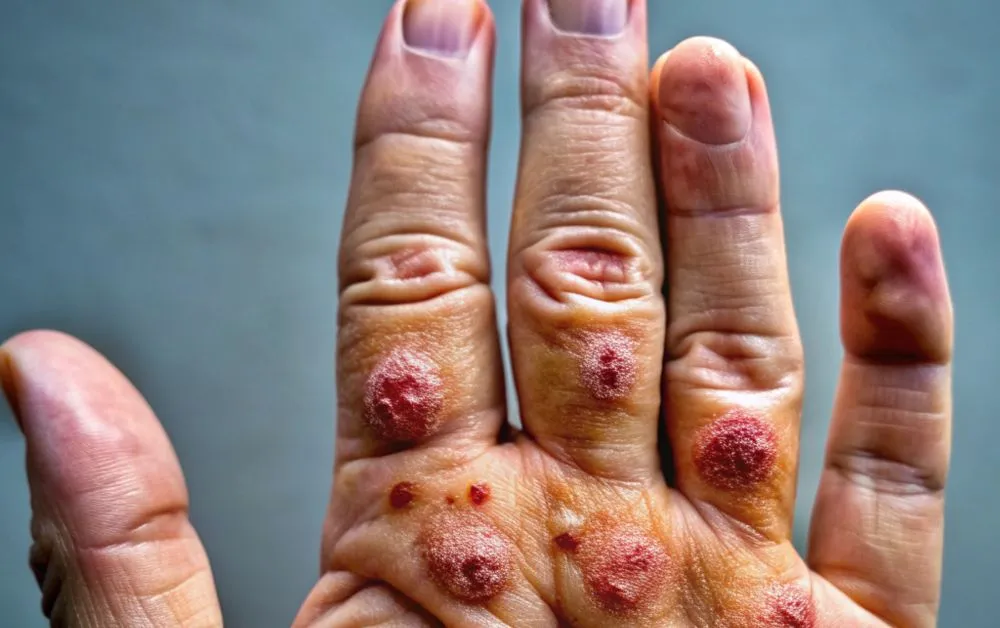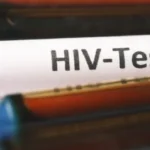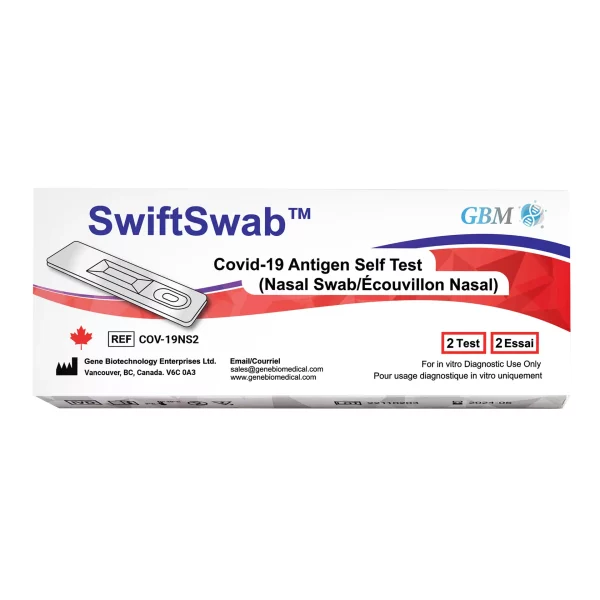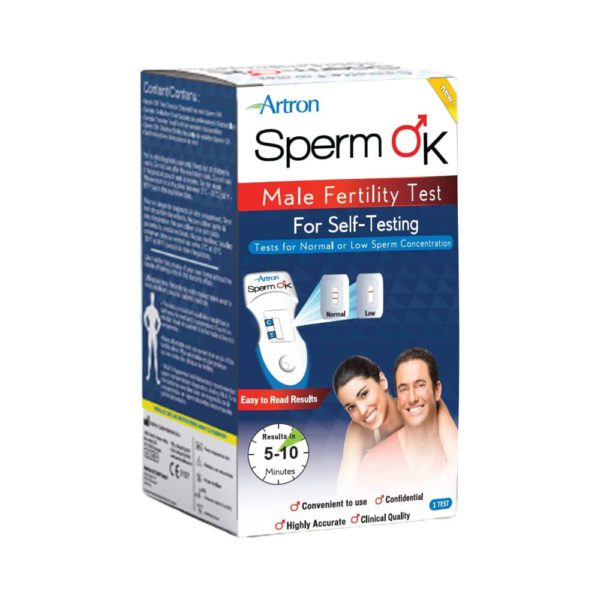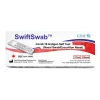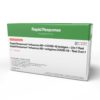Despite looking like an ordinary and harmless sore, the appearance of a chancre on your body is a sign that you have syphilis.
How does it look and what do you need to do next? Here’s all you need to know.
How do you recognize a chancre?
Recognizing what a chancre looks like can help in the early intervention and treatment of syphilis.
The size of a chancre may vary, ranging from small to large, but since it’s painless, people tend to overlook it. Distinctive from other types of sores or ulcers, chancres appear:
- Firm
- Round
- Painless
These sores can be found on the areas of the body that are commonly exposed during sexual contact, such as:
- Genitals
- Anus
- Mouth
What causes a chancre?
A chancre is caused by the Treponema pallidum bacterium, the pathogen responsible for syphilis. This bacterium enters your body through minor cuts or abrasions in the skin or mucous membranes during sexual contact.
Following infection, the bacterium incubates for about three weeks before manifesting as a chancre, which also marks the primary stage of syphilis.
How is a chancre diagnosed?
Your healthcare provider first assesses the sore through a physical examination, where they note its characteristic features. To confirm the presence of the Treponema pallidum bacterium, fluids from the sore may be tested in a lab.
Additionally, your healthcare provider may conduct a blood test to detect syphilis antibodies. This comprehensive approach ensures accurate diagnosis and the initiation of appropriate treatment.
If you notice sores in your body that share the same characteristics as chancres, you may also take an at-home syphilis test to learn whether you have syphilis.
Check out our shop for a range of reliable STI test kits.
What is the treatment for a chancre?
The primary treatment for a chancre caused by syphilis is antibiotics, with penicillin injections being the most common and effective method.
If you’re allergic to penicillin, alternative antibiotics are available and will be prescribed by your healthcare provider.
This treatment approach aims to eliminate the Treponema pallidum bacterium, thereby addressing the root cause of the chancre and preventing the progression of syphilis to more advanced stages.
Can a chancre appear elsewhere?
Yes, a chancre can indeed manifest in locations beyond the primary sites of the genitals, anus or mouth. It’s possible for these sores to appear in less common areas such as your:
- Fingers
- Lips
- Nipples
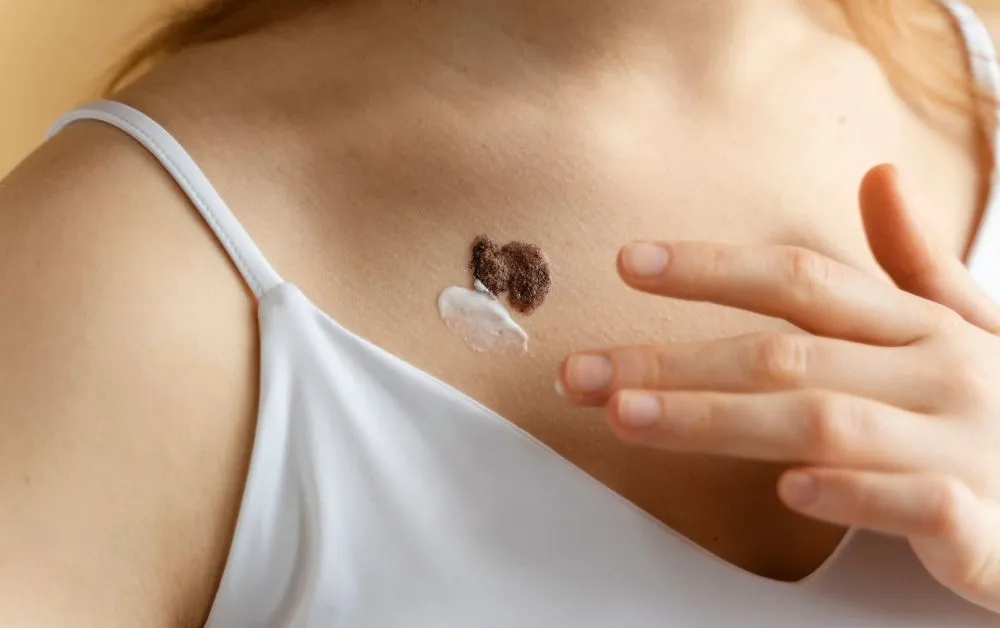
How can one prevent getting a chancre?
Here are what you can do to prevent getting a chancre:
- Practice safe sex. Use condoms during sexual activities to reduce the risk of transmitting or contracting the Treponema pallidum bacterium or the causative agent of syphilis.
- Regular STD screening. Make STD screening part of your healthcare routine especially if you’re sexually active. This helps in early detection and treatment of syphilis before the development of a chancre.
- Avoid sexual contact with partners known to be infected with syphilis. If you have a sexual partner with syphilis, avoid sexual contact with them until they complete their treatment and confirm that they’re free from the infection.
What are the complications if untreated?
If you don’t undergo prompt treatment, a chancre from syphilis can lead to the progression of the disease into secondary syphilis. This stage is characterized by more widespread symptoms.
Over time, untreated syphilis can cause severe long-term health issues, including cardiovascular complications, neurological damage, or death. Is a chancre always syphilis-related?
No, a chancre is not always indicative of syphilis. While it’s a hallmark symptom of the disease, similar sores can result from other conditions. This makes it imperative to undergo testing to secure an accurate diagnosis.
Is a chancre similar to chancroid?
While they’re both associated with STIs and involve the appearance of sores, they differ significantly in their causes, symptoms and treatments.
Similarities between chancre and chancroid
They’re both associated with STIs and are transmitted primarily through sexual contact.
- Presence of ulcers or sores. Chancre and chancroid are ulcers or sores that develop generally at the site of infection and its surrounding areas, such as the genitals, anus or mouth.
- Contagiousness. Both chancre and chancroid are contagious. Direct contact with the sores can transmit the infection to you or your sexual partner.
- Treatment. Both conditions require antibiotic treatment to eliminate the bacteria responsible for the infection. Although different antibiotics are used depending on the specific infection, early treatment is effective in curing both syphilis (chancre) and chancroid.
Differences between chancre and chancroid
Here’s how they differ:
-
- Cause. A chancre is caused by the bacterium Treponema pallidum, which is responsible for syphilis, while chancroid is caused by the bacterium Haemophilus ducreyi.
- Appearance and characteristics. Chancres are typically firm, round, and painless. They have a clean, smooth base and are non-tender, which means they often go unnoticed, especially if they occur in less visible or less sensitive areas. Meanwhile, chancroid sores are soft, irregular, and painful. They have a ragged edge and are often surrounded by inflamed, reddened skin. Unlike chancres, chancroid sores are tender to the touch and can be quite painful.
- Progression. Chancres generally appear within 3 weeks after exposure to the bacterium. They usually heal on their own within 3 to 6 weeks, even without treatment, but untreated an untreated chancre can progress to more severe stages of syphilis. Symptoms of chancroid typically appear 4 to 10 days after exposure. The painful ulcers can be accompanied by swollen and painful lymph nodes in the groin area, known as buboes, which may become abscessed and rupture. Chancroid does not have stages like syphilis but requires treatment to prevent complications.
- Diagnosis. While syphilis can be diagnosed by a blood test, chancroids are diagnosed based on the appearance of the ulcers and by ruling out other similar conditions such as syphilis or herpes.
- Treatment. While both conditions are treated with antibiotics, the standard treatment for syphilis is penicillin and the duration and type of treatment depend on the stage of the infection. Meanwhile, chancroid is treated with different antibiotics, such as azithromycin, ceftriaxone, ciprofloxacin, or erythromycin. Pain management and care for any abscessed lymph nodes may also be necessary.
| Chancre | Chancroid | |
| Cause | Bacterium Treponema pallidum | Bacterium Haemophilus ducreyi |
| Appearance | Firm, round, painless, clean, smooth base, non-tender | Soft, irregular, painful, with ragged edge and are often surrounded by inflamed, reddened skin |
| Progression | Appears 3 weeks after exposure | Appears 4 to 10 days after exposure |
| Treatment | Antibiotics (Penicillin) | Antibiotics (Azithromycin) |
Frequently asked questions
What is a chancre?
A chancre represents a painless ulcer that forms during the primary stage of syphilis. This sore can appear at the infection’s initial site and is a key indicator of the disease.
How does one recognize a chancre?
Chancres are identified by their round, firm, and painless nature, usually appearing at the syphilis infection’s entry point on the body. Diagnosis often requires medical examination and testing.
Where on the body can a chancre appear?
Chancres can manifest on the genitals, anus or mouth, depending on the site of infection. Their location corresponds with the point of contact through which the syphilis bacterium entered.
Is a chancre contagious?
Yes, chancres are highly contagious. Direct contact with a chancre during sexual activity can transmit the syphilis bacterium, highlighting the importance of protective measures and early treatment.
How is a chancre treated?
Treatment for a chancre involves antibiotics, typically penicillin, to combat the syphilis infection.
Key takeaway
While chancrest are painless and might be overlooked, they are a significant indicator of syphilis infection and require prompt medical attention to prevent the disease from progressing to more severe stages. If you notice any unusual sores or ulcers, consult a healthcare provider to ensure accurate diagnosis and timely treatment.
Make STD screening part of your healthcare routine. Explore our shop for high-quality at-home STI tests now.
